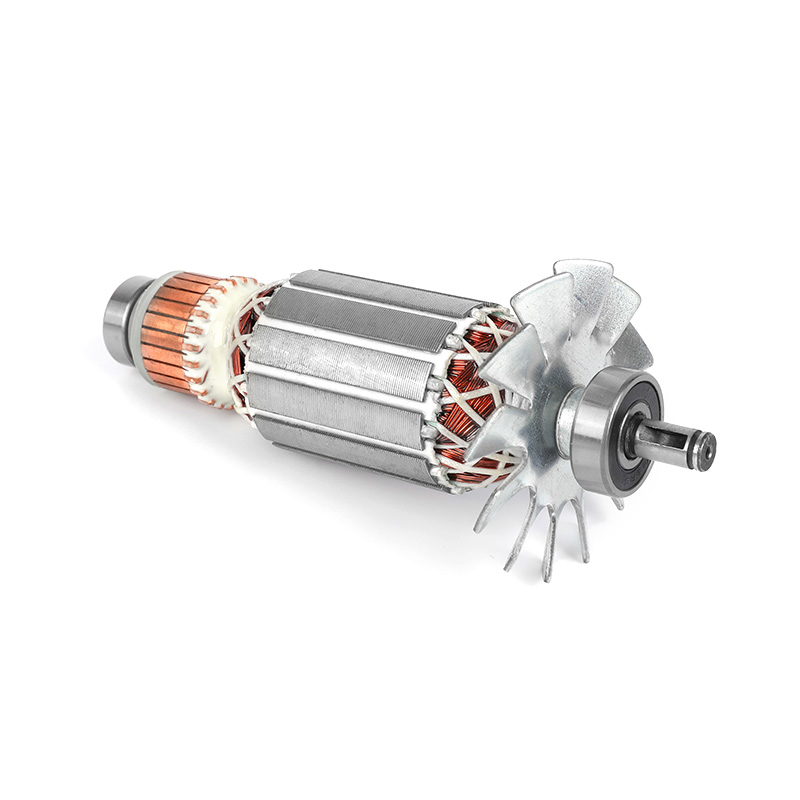- Home
- Products
- About Us
- Application
- News
- Contact Us
Web Menu
- Home
- Products
- About Us
- Application
- News
- Contact Us
Product Search
Exit Menu
How Does an Armature Affect Power Tool Performance?

The armature is a key component in the functioning of power tools, playing a critical role in how efficiently and effectively the tool operates. As a central part of the motor, the armature works in conjunction with other components like the stator, commutator, and brushes to generate power and drive the tool's function.
1. Energy Conversion
The armature's primary role in a power tool is to convert electrical energy into mechanical energy. When power is supplied to the tool, the armature begins to rotate within the magnetic field created by the stator. This rotational motion is what powers the tool's actions, whether it's drilling, grinding, or cutting. A well-functioning armature ensures that the energy conversion is smooth and efficient, which directly affects the power tool's performance.
If the armature is damaged or worn, the conversion process can become less efficient. This leads to reduced power output, making the tool struggle to perform tasks as effectively as it once did. In extreme cases, a faulty armature can result in the tool not starting or operating at all.
2. Speed and Torque
The armature's condition also impacts a power tool's speed and torque. Torque refers to the rotational force that drives the tool, while speed determines how fast the tool operates. Both are critical for tasks like drilling, sanding, or cutting, where the balance of torque and speed determines the tool's effectiveness for specific materials or tasks.
A well-maintained armature ensures that the tool delivers consistent torque and speed. If the armature becomes worn or develops issues such as a broken winding, the tool may exhibit irregular speed or struggle to maintain torque under load, leading to poor performance. For instance, a drill may not be able to penetrate tougher materials, or a grinder may slow down under pressure.
3. Heat Generation and Tool Longevity
An armature also influences how much heat a power tool generates during operation. When the armature works efficiently, it reduces the amount of heat produced, thereby preventing the motor from overheating. However, when the armature is in poor condition, it can cause excess heat buildup. Overheating can lead to further damage to the armature and other motor components, shortening the overall lifespan of the power tool.
Frequent overheating caused by an inefficient armature may also result in the tool's brushes wearing out faster. As the armature generates more heat, the brushes that make contact with it may experience increased friction, leading to wear and requiring more frequent replacements.
4. Maintenance and Performance
Regular maintenance of the armature is key to ensuring that a power tool continues to perform at its good. Inspecting the armature for signs of wear, such as cracks or damaged windings, and replacing the brushes when necessary can extend the life of the tool and prevent poor performance. Using the tool within its specified limits also helps reduce strain on the armature, contributing to smoother operation and fewer repairs.
The armature is a vital component that significantly affects power tool performance. It is responsible for converting electrical energy into mechanical energy, which drives the tool's functionality. A well-maintained armature ensures that the tool operates efficiently, delivering the right speed and torque for various tasks. By taking care of the armature through proper maintenance and addressing any signs of wear, users can keep their power tools running smoothly and avoid performance issues.
-
Add: 1st Floor, No. 2, Huanan Road, Zhengcun, Economic Development Zone, Yongkang City, Zhejiang Province, China
-
Tel: +86-0579-87133113
-
E-mail: [email protected]

 English
English русский
русский Español
Español